Pre-Modern Japanese Art Test 3
1/90
There's no tags or description
Looks like no tags are added yet.
Name | Mastery | Learn | Test | Matching | Spaced |
|---|
No study sessions yet.
91 Terms
Name
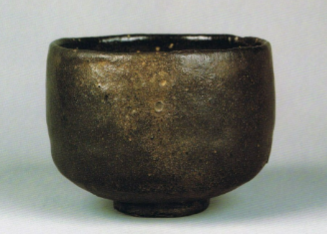
Black “Raku” Tea Bowl
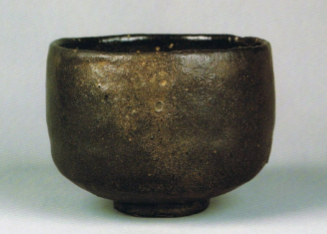
Artist
Chojiro
Medium
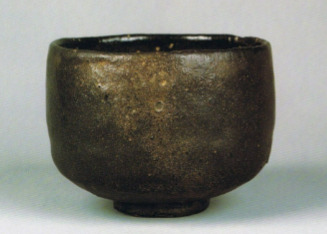
earthenware
Period
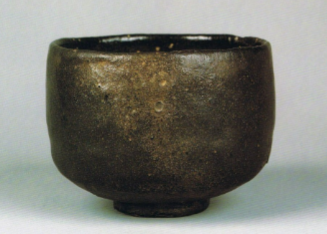
late 16th century, Momoyama period
What is this bowl the embodiment of?
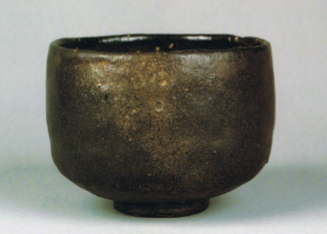
the wabi-sabi aesthetic
Raku Tea Bowl
a hand-shaped lightweight glazed earthenware
wabi-sabi aesthetic
finds beauty in the simple and rustic, appreciates imperfection through asymmetric and irregular form
How was the first Raku bowl created?
requested by Rikyu, created by Chojiro
Name
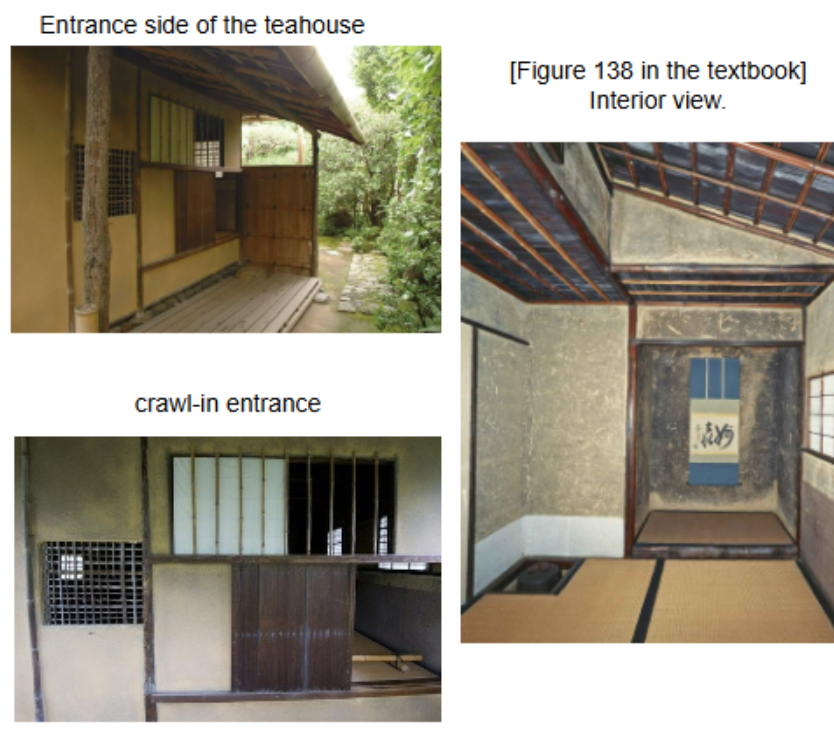
Taian Teahouse
Artist

Rikyu
Medium
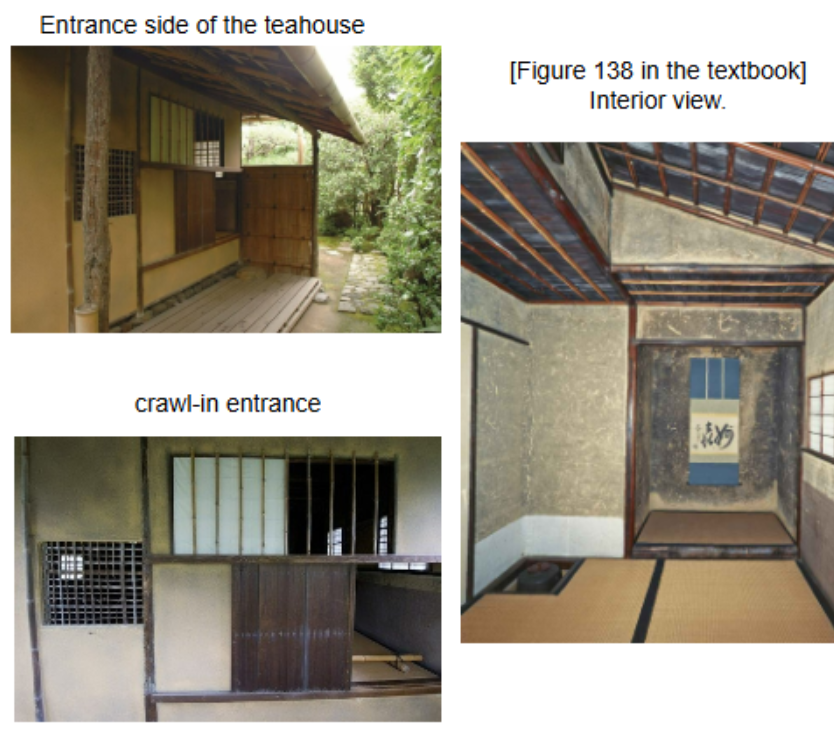
wood, mud, straw, washi paper, and bamboo
Period
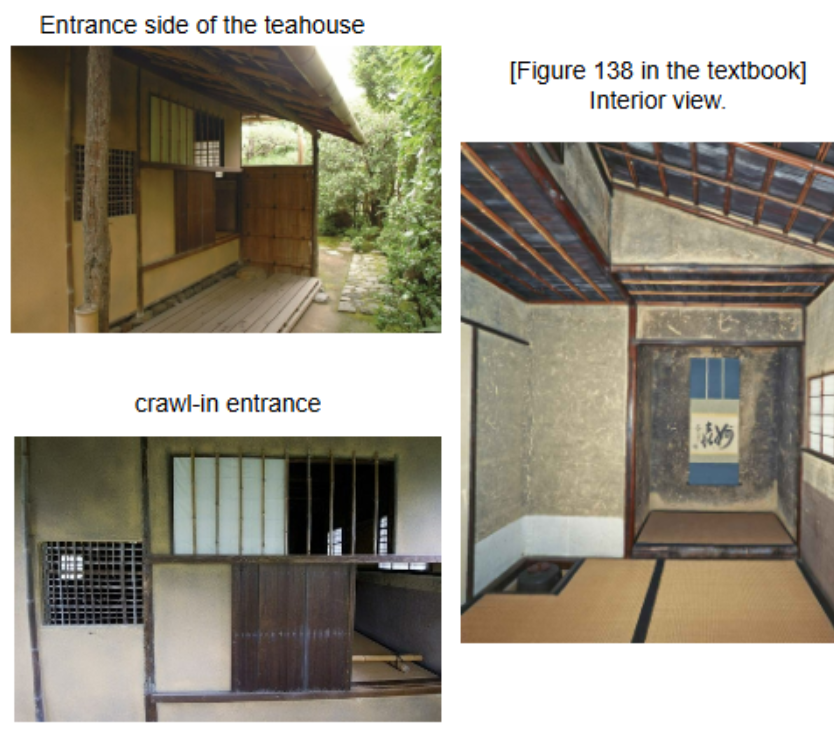
1582, Momoyama period
What does this house represent?
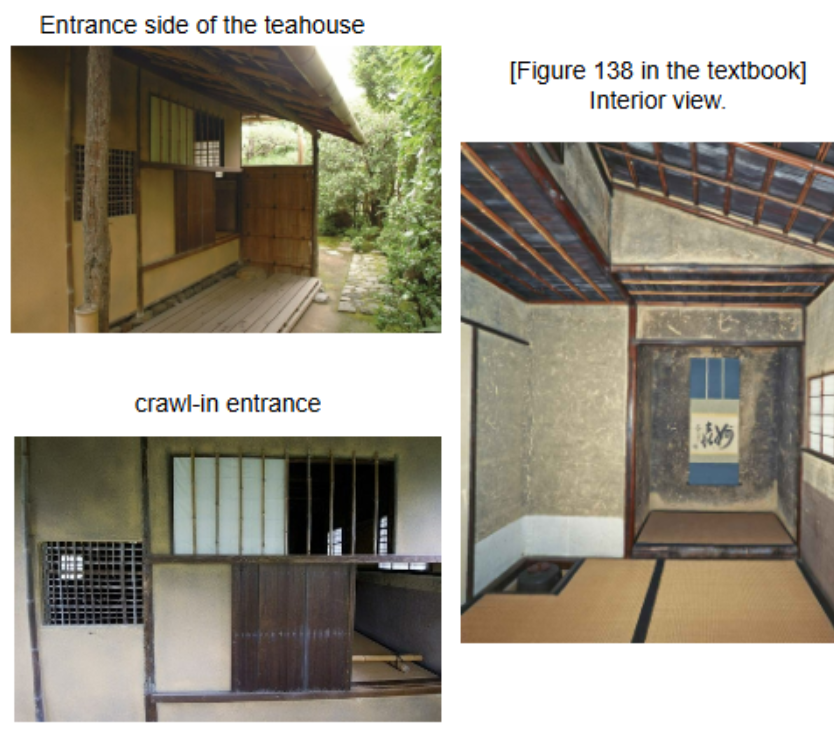
the wabi-sabi aesthetic
Name
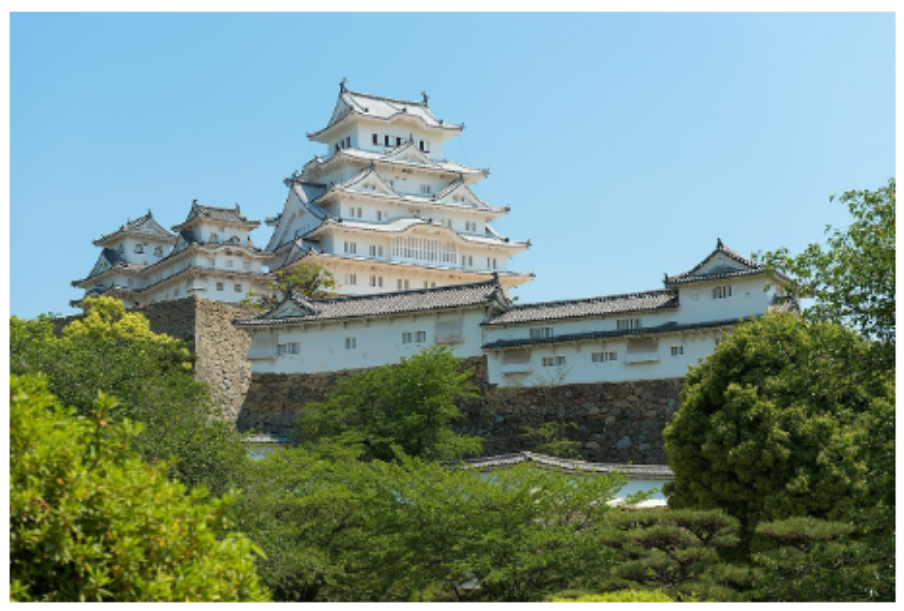
Himeji Castle
Period
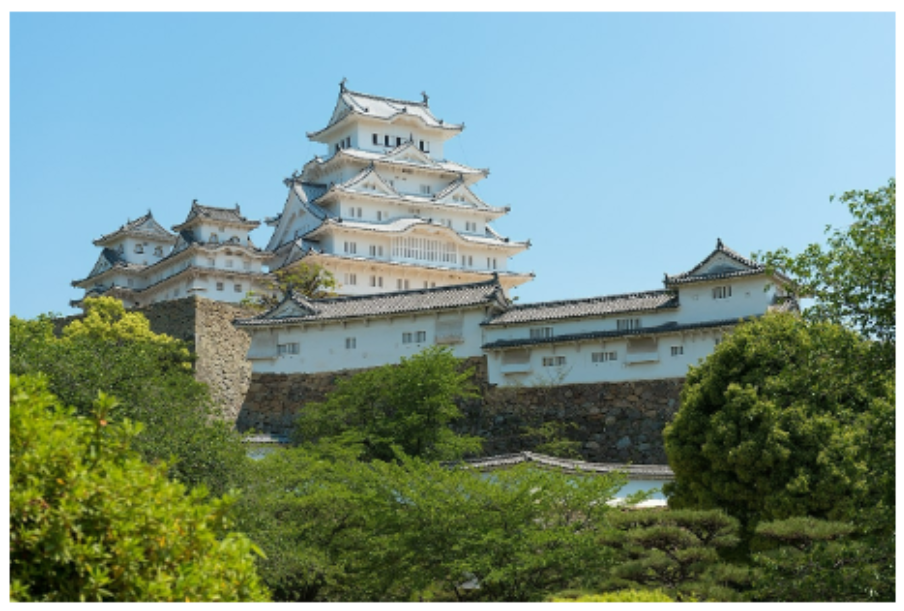
built in 1346, completed in 1609, Momoyama period
Medium
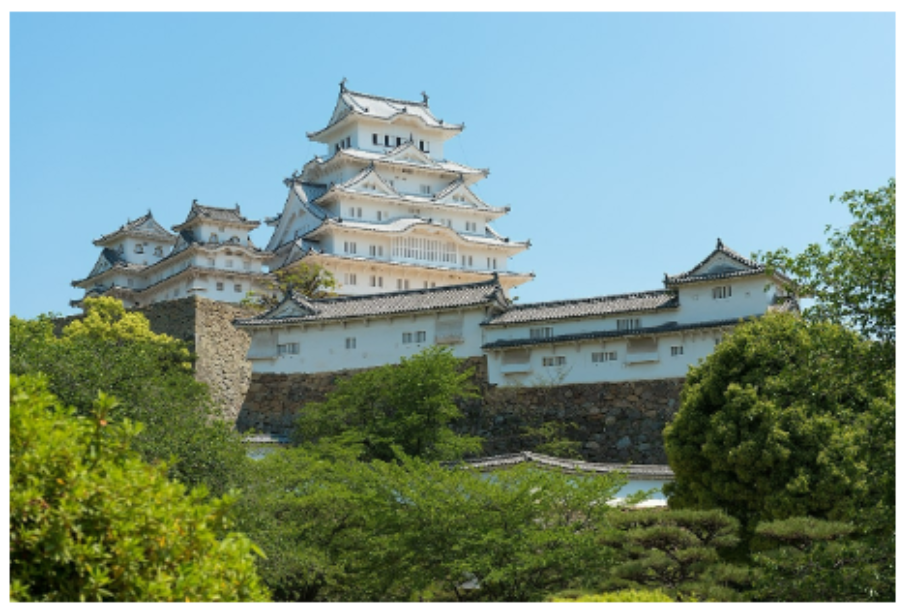
wood, stone, plaster, and tiled roofs
What are some of the defensive measures of Himeji Castle?
heavily fortified gates, tall walls, places for archers, winding paths
What are the features of Shoin-style rooms?
hanging scroll, staggered shelves, sliding doors, tatami mat flooring, decorative alcove, built-in desk, sliding windows
what is in the luxurious rooms of Himeji Castle?
wall in the alcove and the sliding doors are painted in vivid color and gold leaf
Name

Cypress
Artist

Eitoku Kano
Medium

8-panel screen, ink, color, and gold leaf on paper
Period
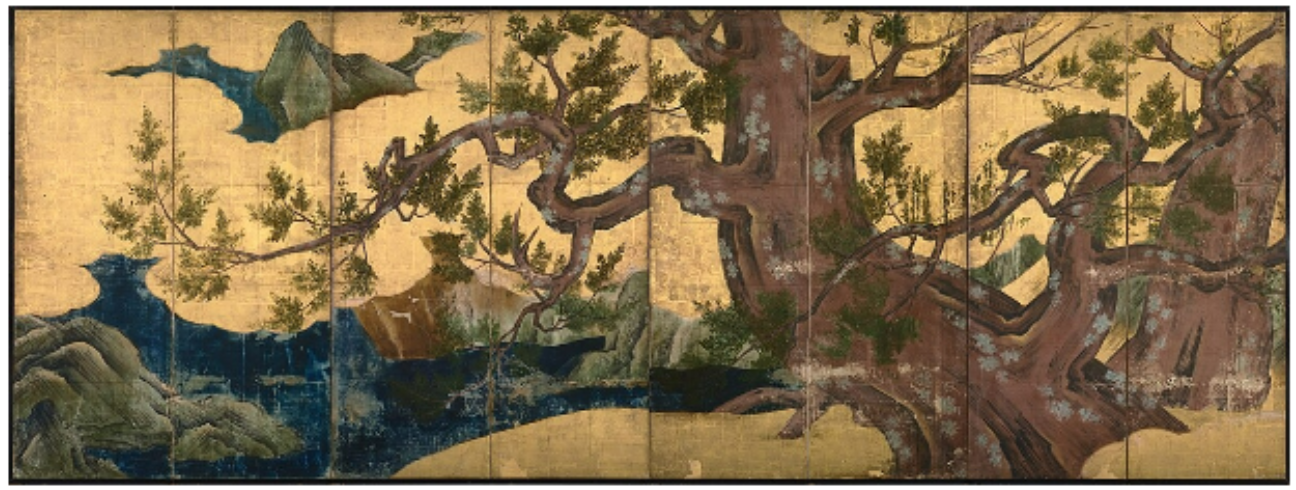
1590 Momoyama Period
what techniques are used in this work?
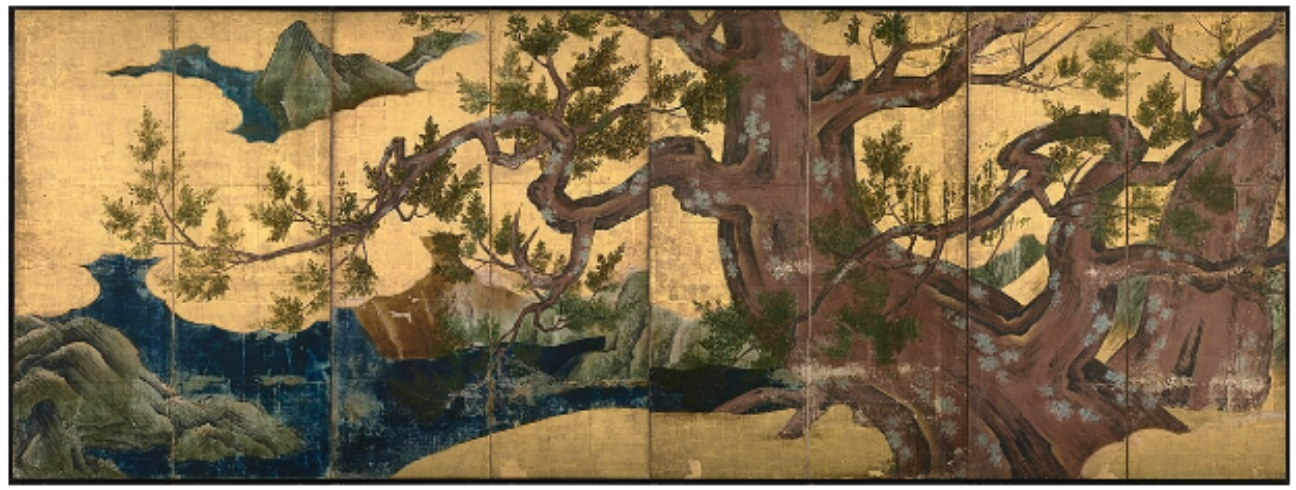
byobu(large-scale painting in the format of folding screen), Heian-era yamato-e elements(vivid color and gold), Zen painting elements(natural subjects and ink brushwork), cropping
What does Nanban mean?
literally means Southern barbarians, refers to foreigners
Name
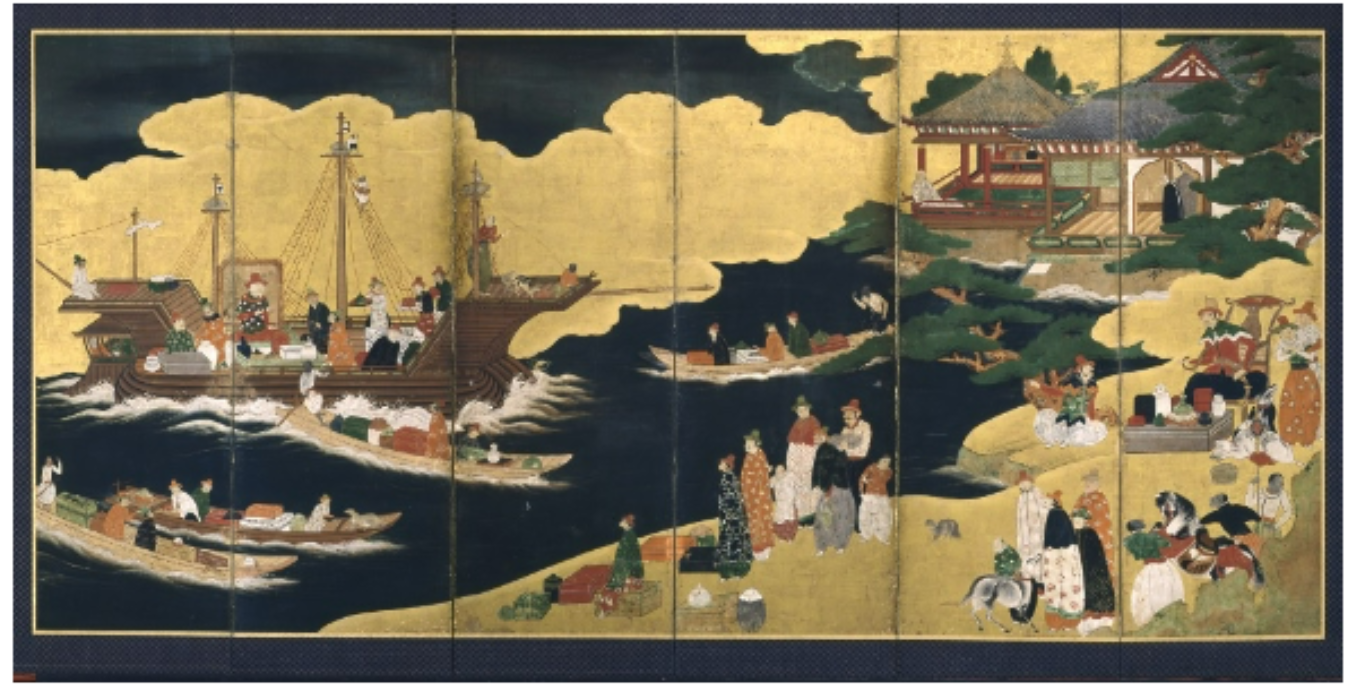
Nanban Screen
Medium
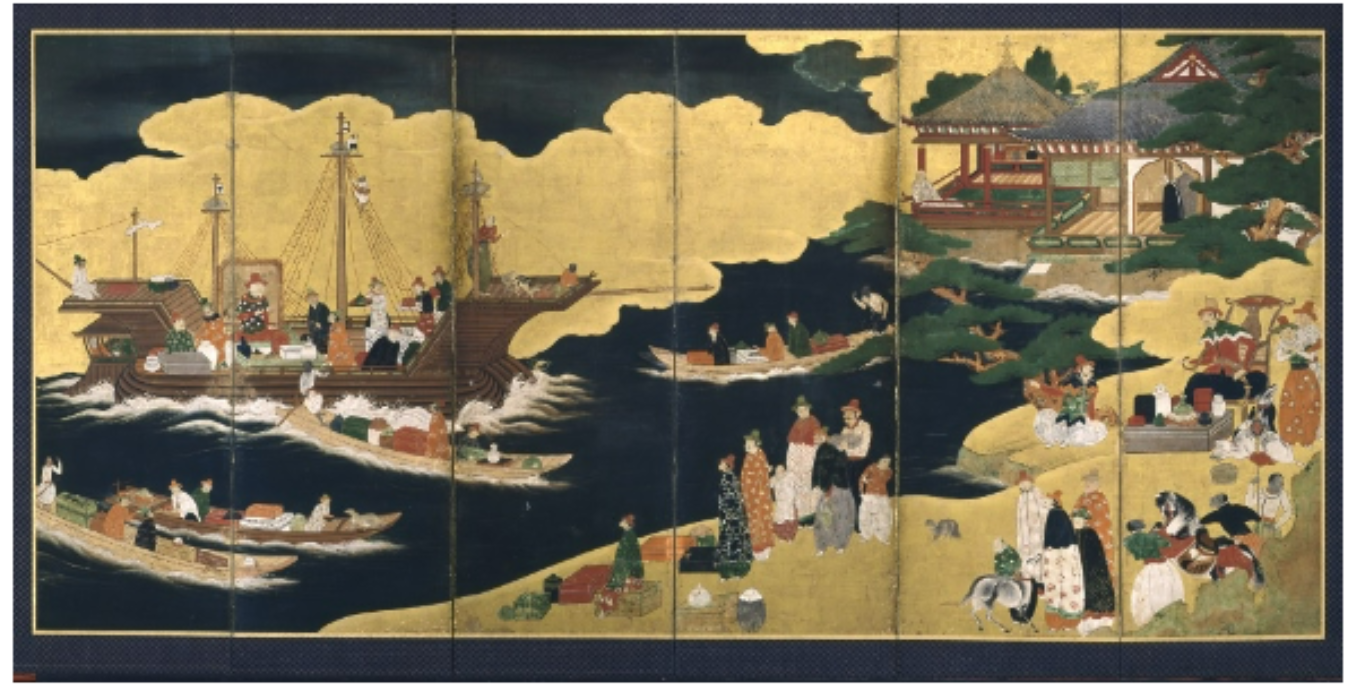
one of a pair, six panel folding screen, ink, color, and gold on paper
Period
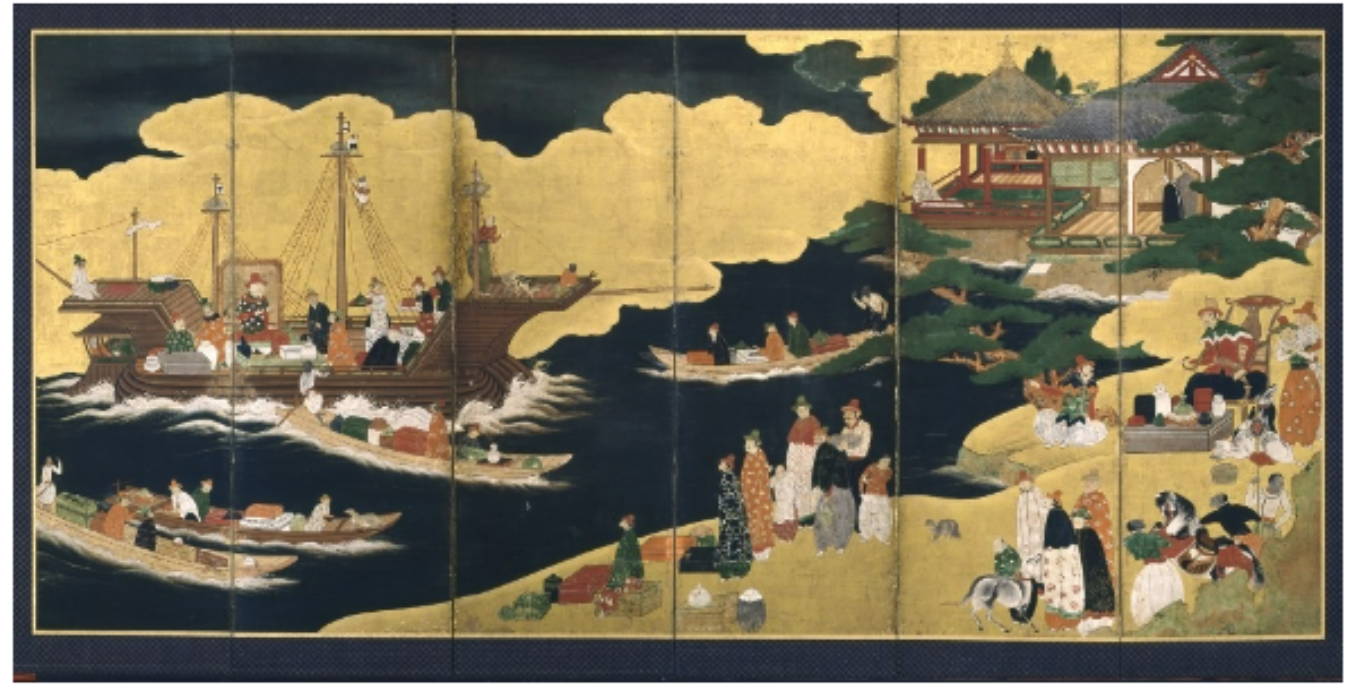
late 16th- early 17th century, Momoyama period
Name

Scenes in and around Kyoto
Medium

a pair of 6-panel screens, ink and color with gold on paper
Period

1614-15, Momoyama-Edo period
What are some design choices in this work?

Bird’s eye view, panoramic view, landmarks arrangement is accurately relative to each other, figures and objects not proportionate, flattened space, highly detailed, lively city life, gold clouds
Name

Waves at Matshushima
Artist

Sotatsu Tawaraya
Period

early 17th century, Edo Period
Medium

a pair of 6-panel screens, ink, color, gold, and silver on paper
Rinpa style painting
Rin of Korin and pa meaning style or school, based on yamato-e style painting, revival of Heian court arts
Who were the representative painters of Rinpa school?
Sotatsu and Korin
Who promoted the Rinpa Style?
the wealthy merchant class
What techniques did Sotatsu follow?
boneless(no-outline), puddled ink
puddled ink technique
wet pigments are layered to form pooling, gradation effect
Name

Irises with eight planked bridges
Artist

Korin Ogata
Medium

pair of 6-panel folding screens, color and gold leaf on paper
Period

18th century, Edo Period
What does this earlier Ukiyo-e print depict?

a scene at a teahouse in the Yoshiwara pleasure district
Ukiyo-e print
single sheet, depicts new urban subjects, produced by a group of artists, mass-producible, inexpensive and affordable
What new art what promoted by the middle class in the Edo Period?
Ukiyo-e woodblock prints
What was the process of Ukiyo-e prints?
artist designs it, carver carves it, printer prints it
what were popular themes in Ukiyo-e prints?
Bijin(beautiful women), Kabuki actor, landscape
Name

Three Beauties of the present day
Artist
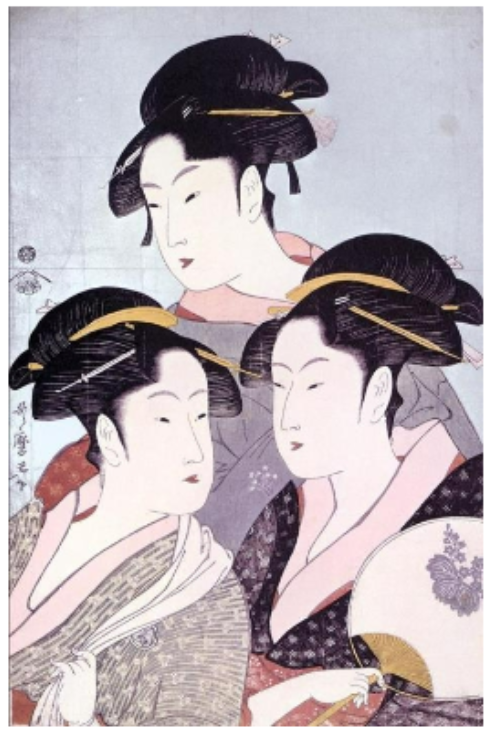
Utamaro Kitagawa
Medium
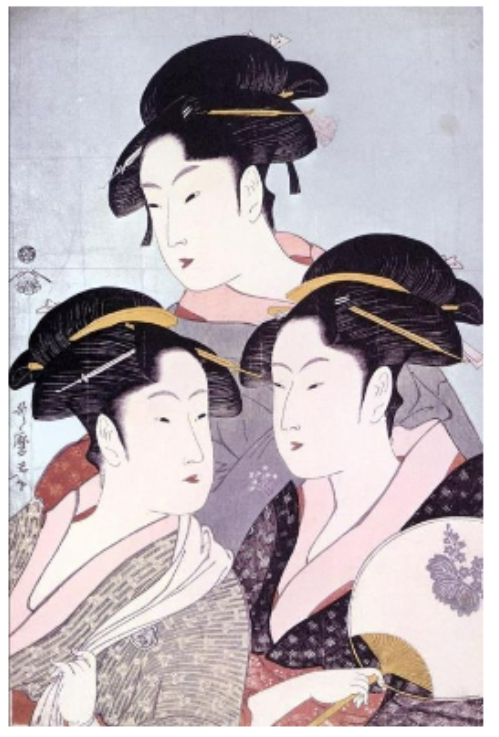
color woodblock print with mica-dusted background
Period
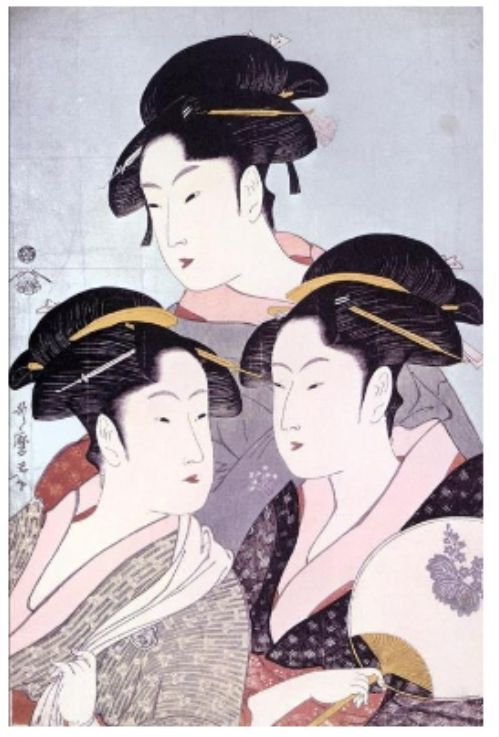
1790s, Edo Period
What was Utamaro known for?
bijin(beautiful women) prints, introduced the close-up portrait format
Name
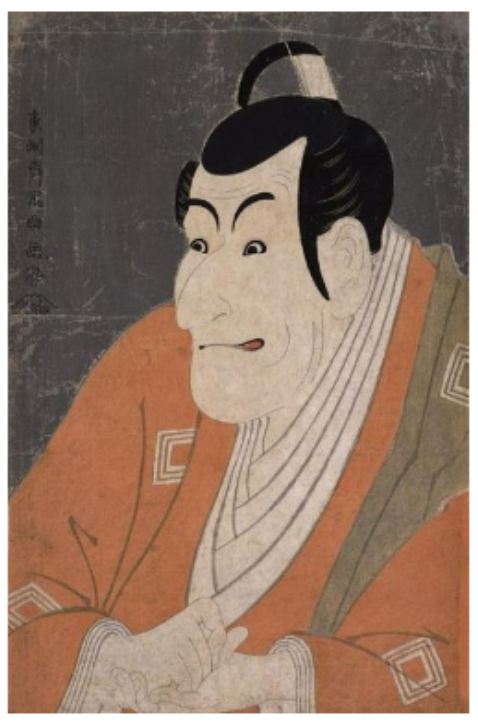
Kabuki Actor Ebizo Ichikawa
Artist
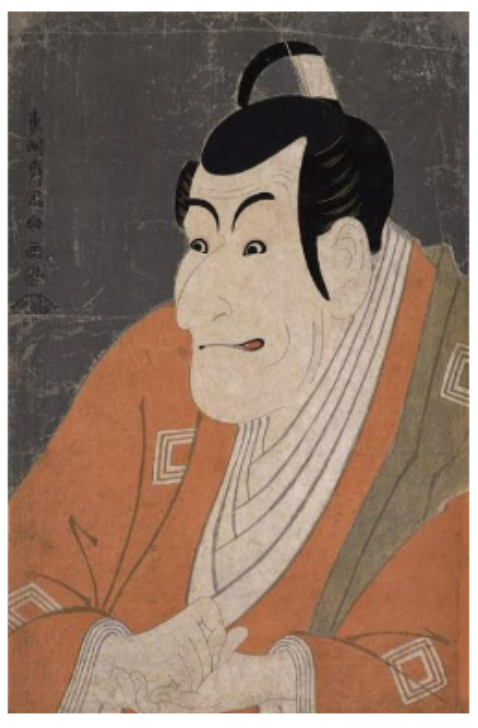
Sharaku
Medium
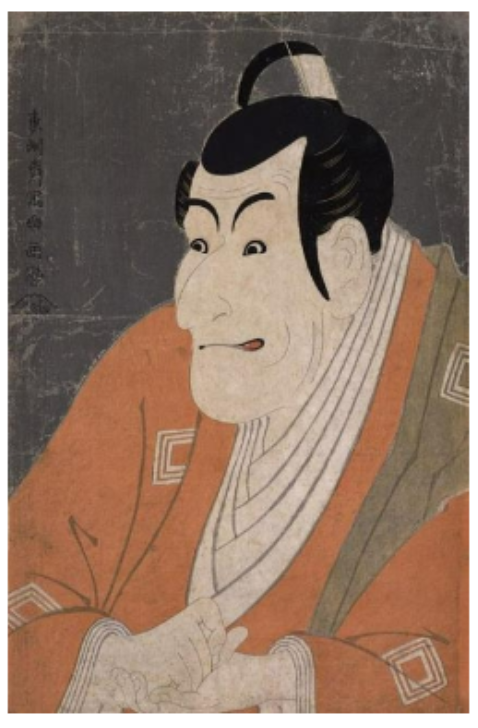
color woodblock print with black mica
Period

1794
What was Sharaku known for and criticized for?
portrayed the kabuki stars realistically, not hiding their flaws
What happened to Sharaku?
his career ended after 10 months
Name

The Great Wave from the series 36 views of mt. fuji
Artist
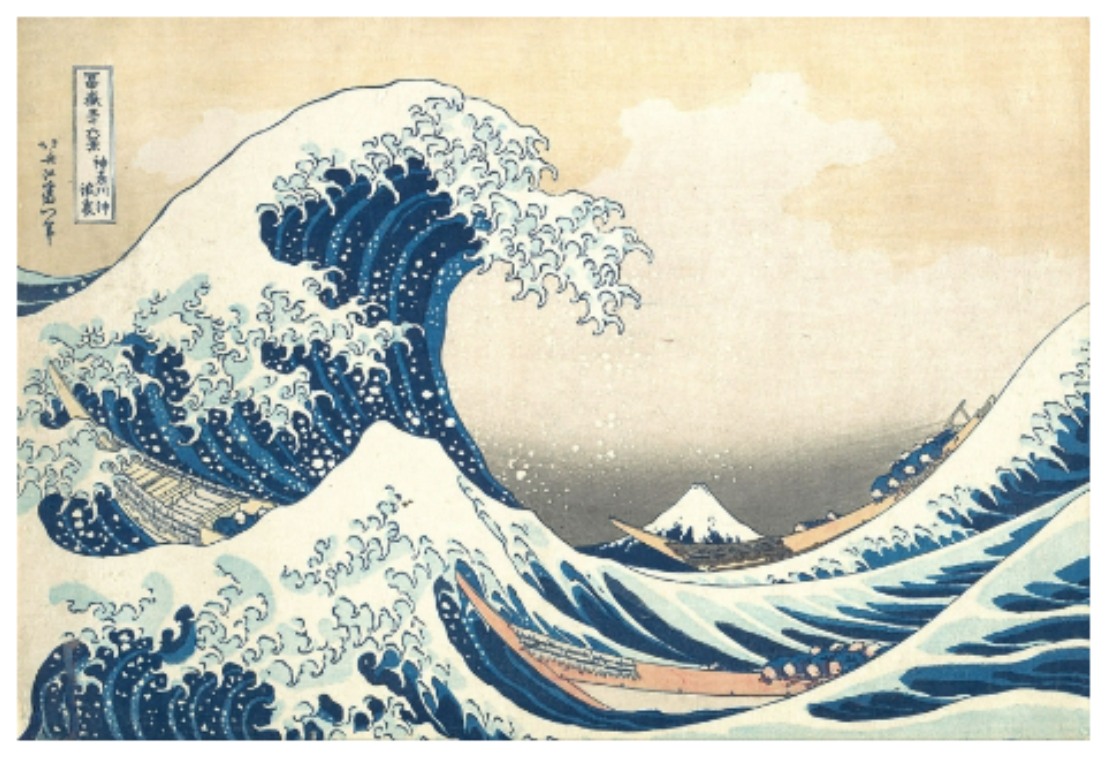
Hokusai Katsushika
Medium
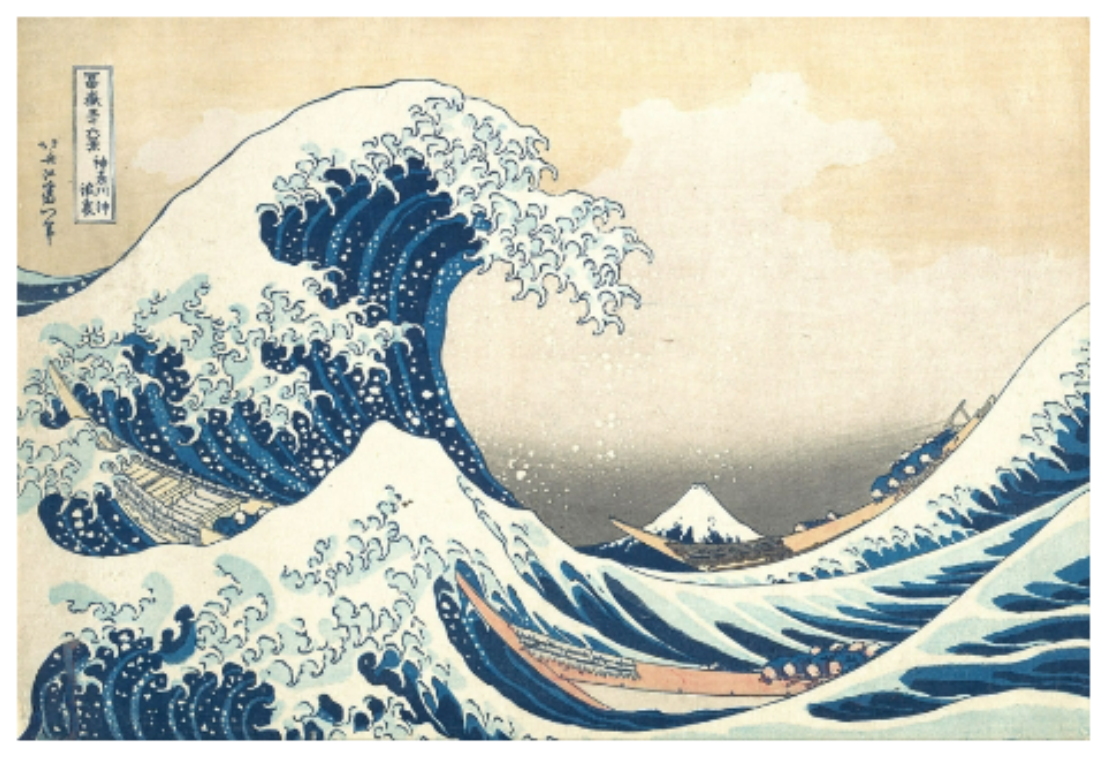
color woodblock print
Period
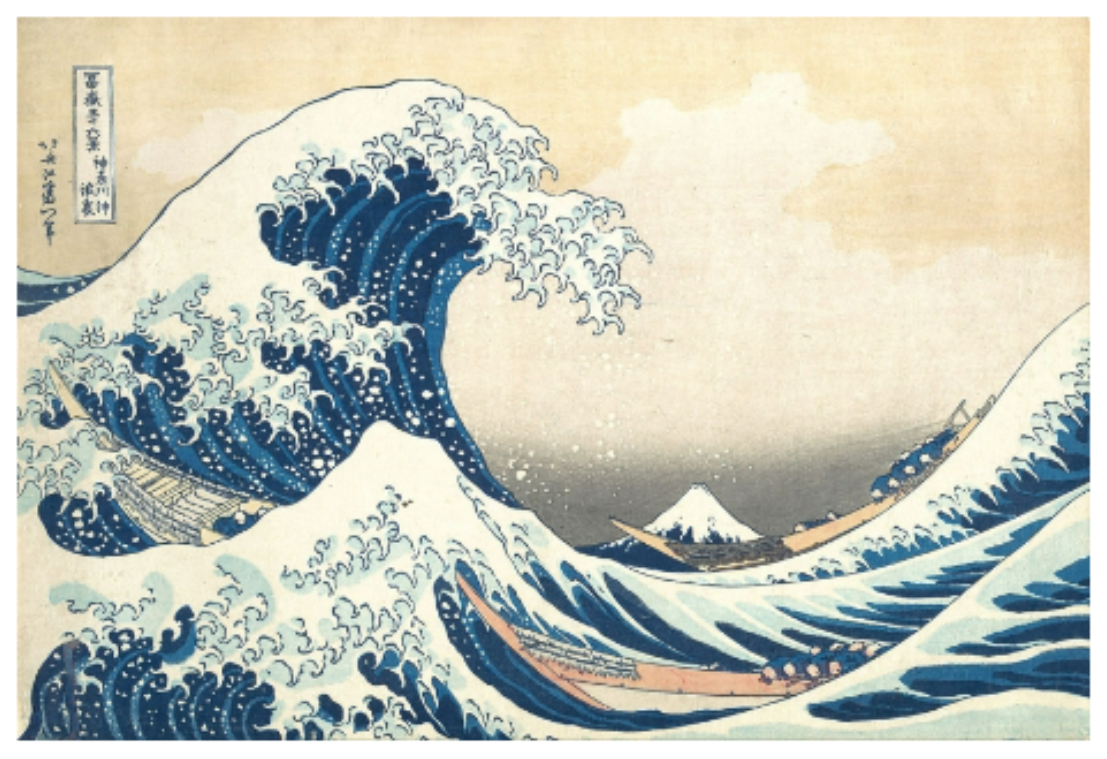
1830-32, Edo period
Name

a print from the series entitled 53 Stations of the Tokaido
Artist
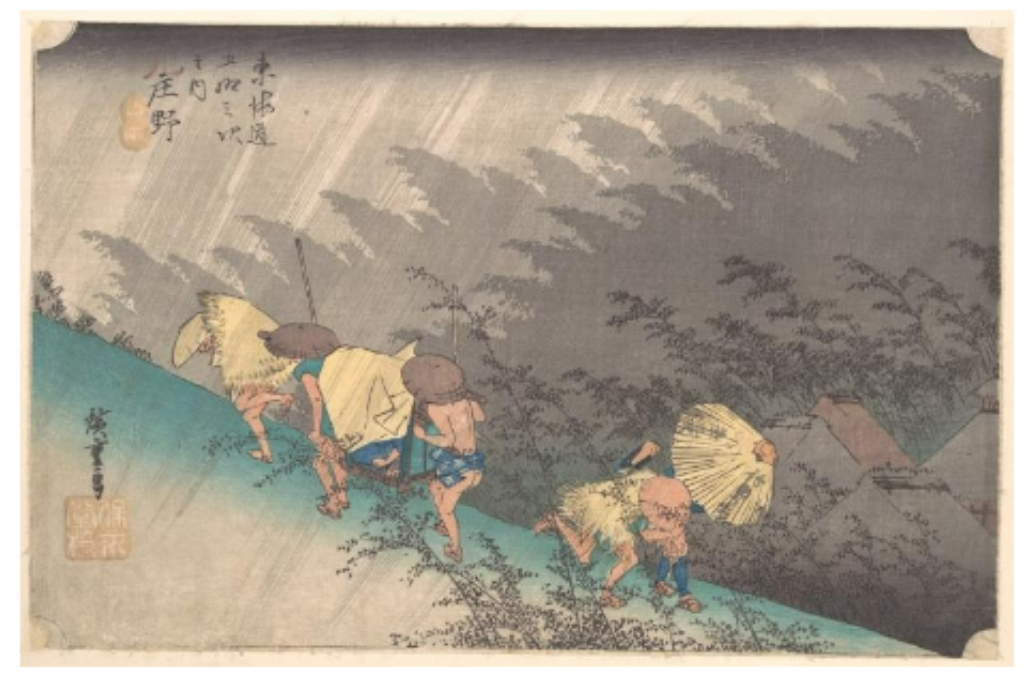
Hiroshige Utagawa
Medium
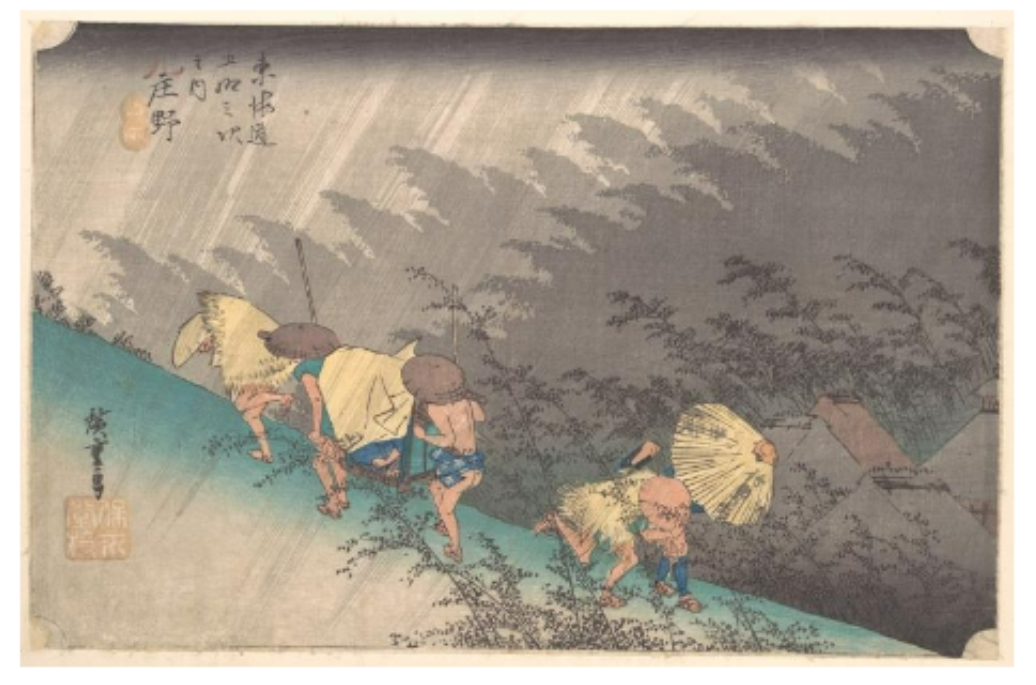
color woodblock print
Period

Edo period
Uki-e
perspective picture, came from learning western art techniques(linear perspective) from the Dutch
Name
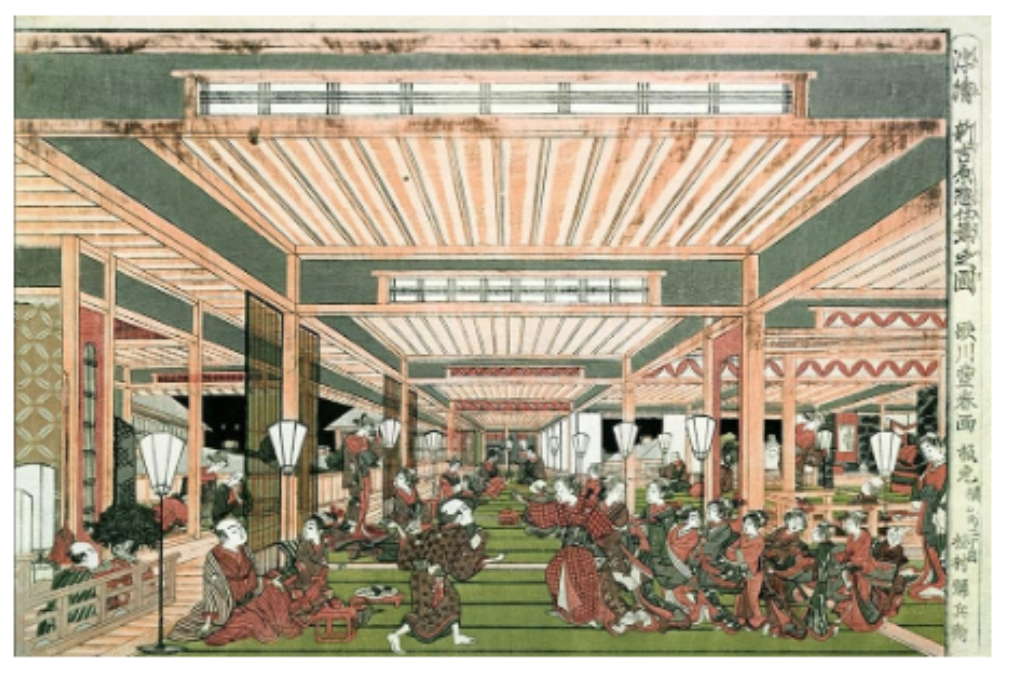
a scene at a teahouse in the Yoshiwara pleasure district
Medium
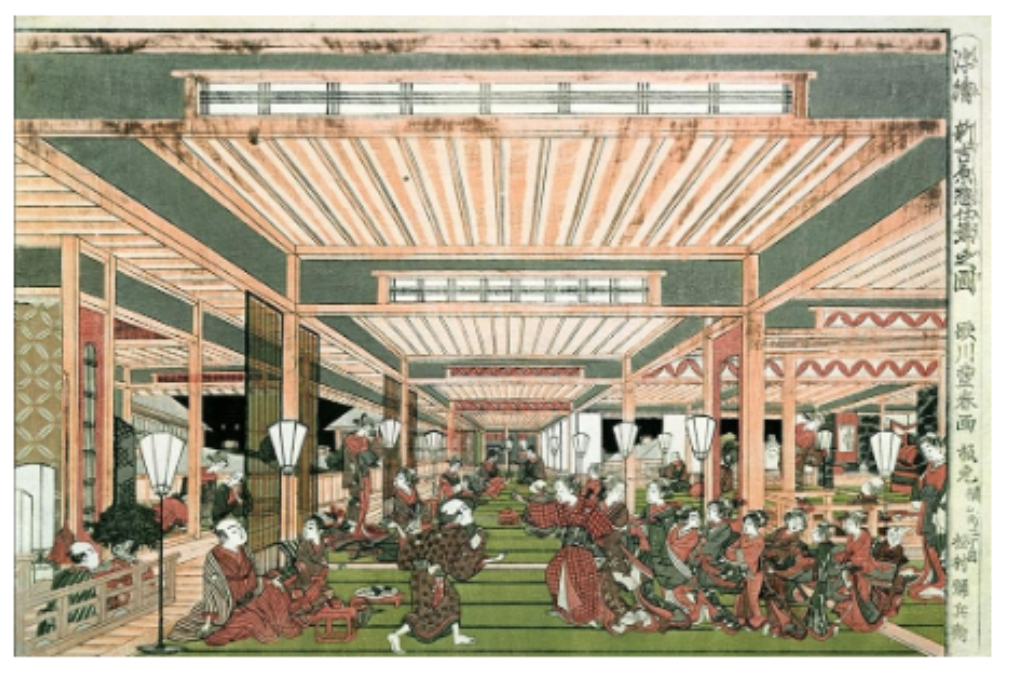
color woodblock print
Period
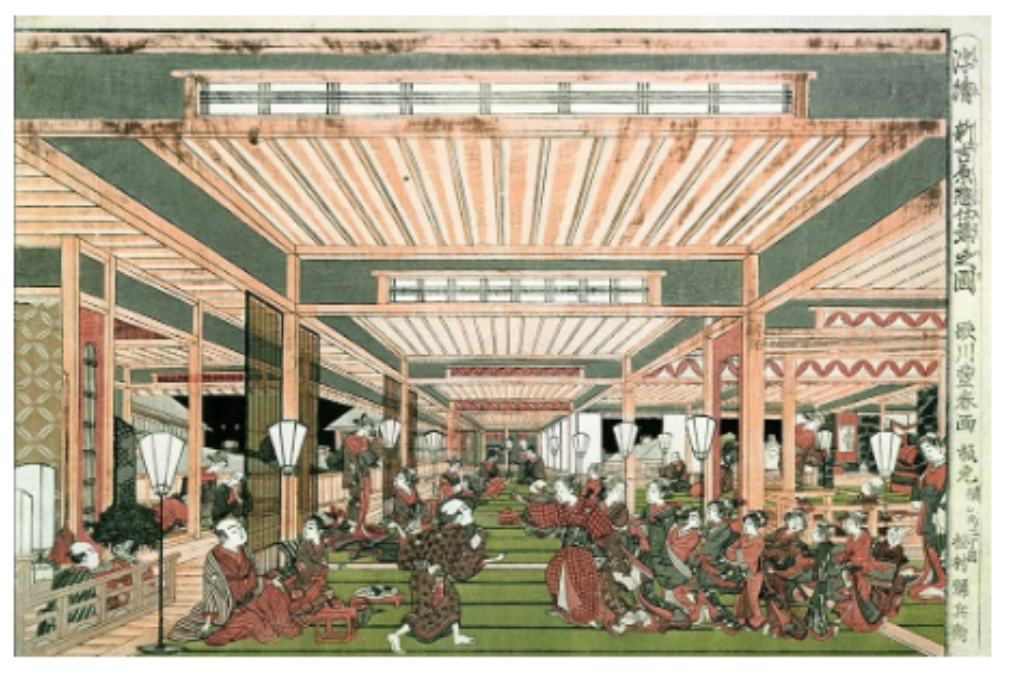
mid-18th century, Edo period
Name

Pine Trees in the Snow
Artist

Okyo Maruyama
Medium

a pair of six-panel screens, ink, color, and gold on paper
Period

1780
What was this artwork representative of?

a move towards creating naturalistic representation of nature
How did Japan’s isolationist period end?
US Navy Commodore Matthew Perry arrived at Edo Bay in 1853
Japonisme
the influence of Japanese art and design on Western artists
Name
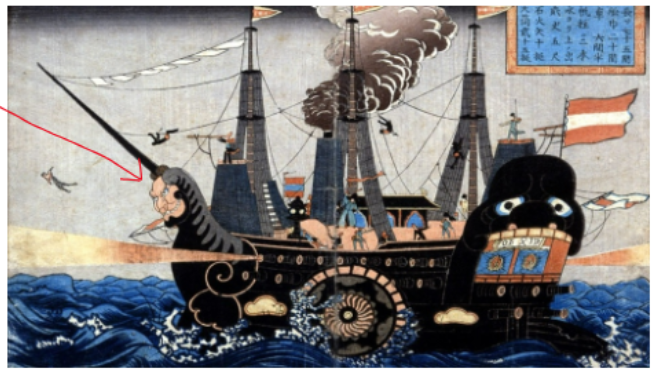
Commodore Matthew Perry’s Black Ship
Medium
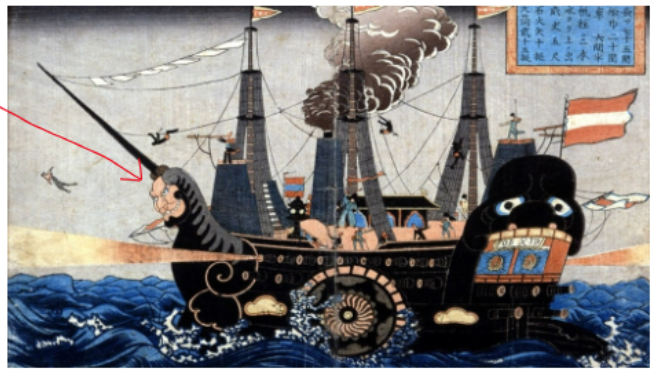
color woodblock print
Period

Edo period
Name
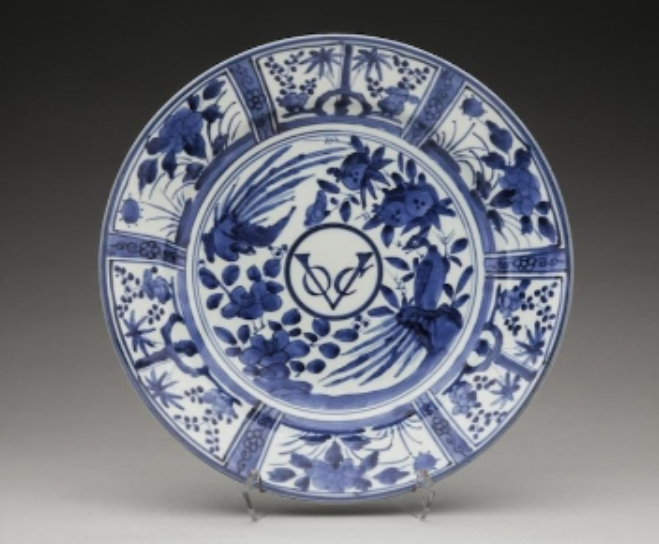
Plate with VOC monogram
Medium
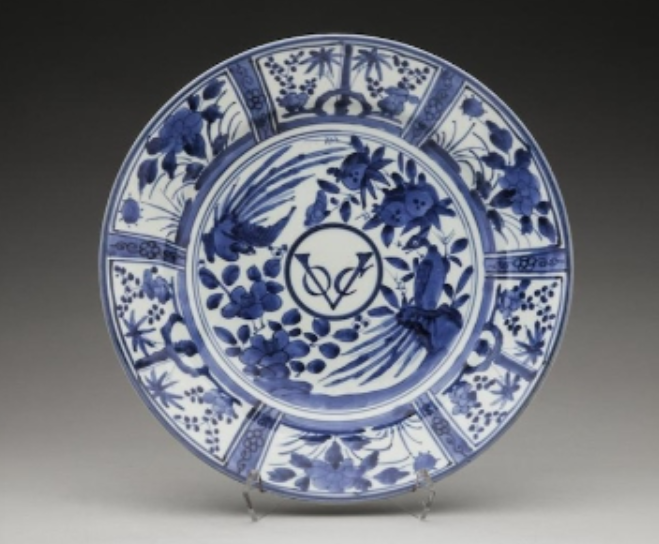
porcelain, underglaze blue
Period
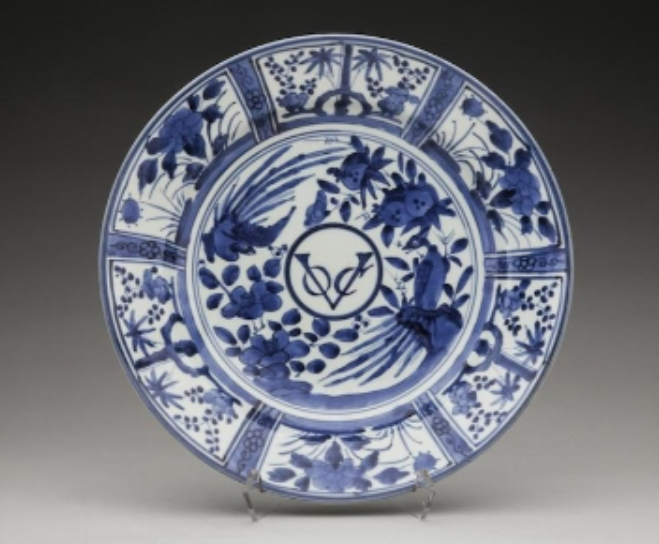
late 17th century, Edo Period
What does VOC stand for in this work?
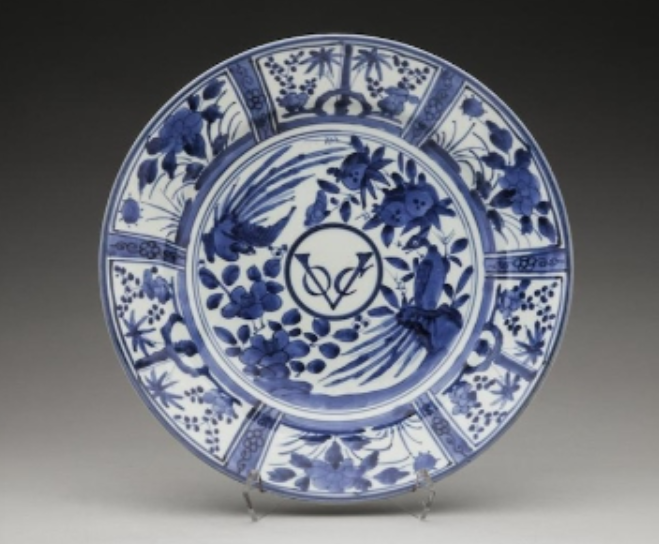
the Dutch East India company which exported Japanese porcelain to Europe
What is an example of Japonisme?
Imari-style porcelain
Porcelain
white stone fired at a higher temperature than earthenware and stoneware, thin and light but strong
Imari
the port of which porcelain products were exported to Europe
Arita
major porcelain production site